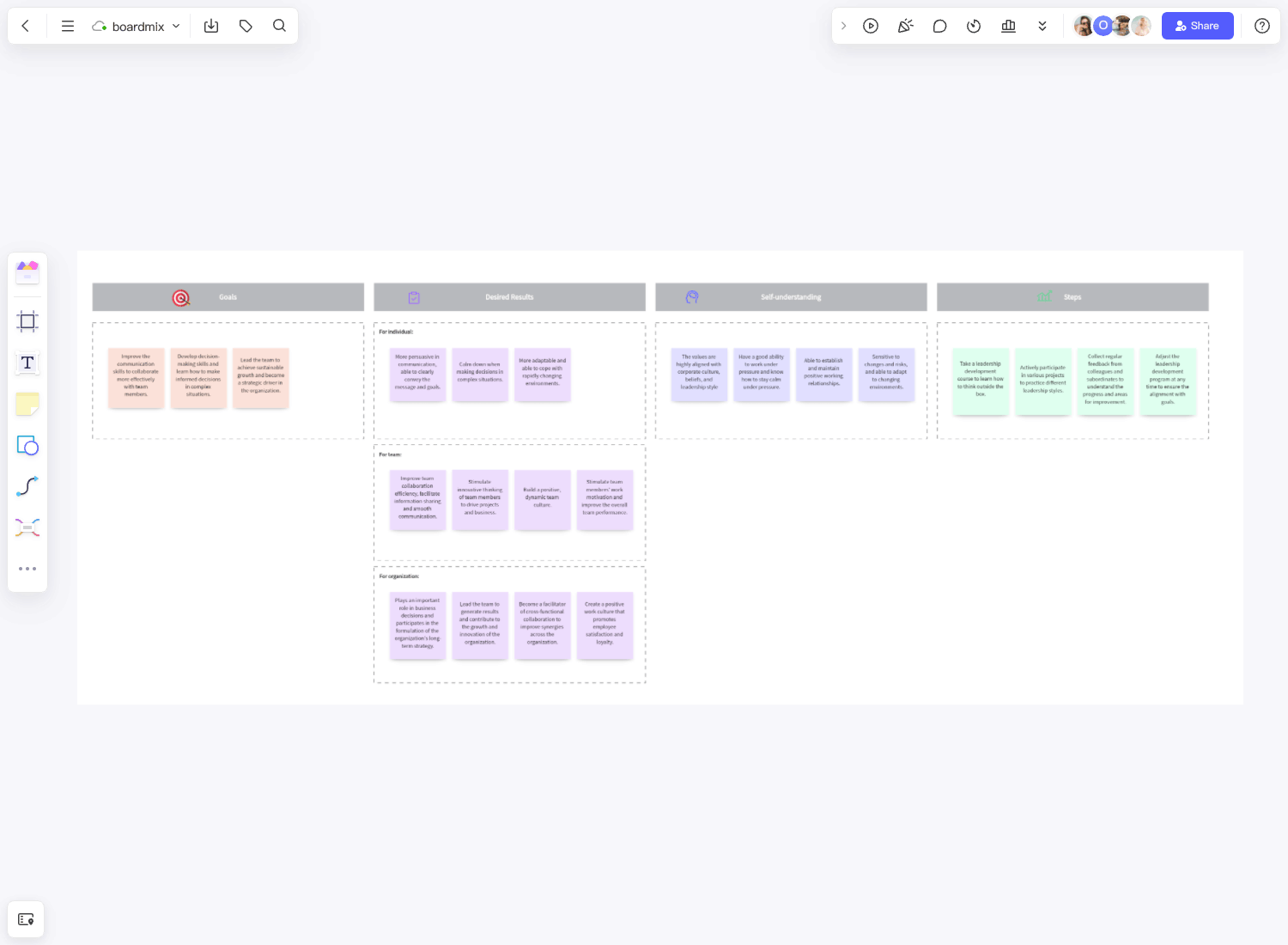In an organization, there are leaders and followers, both of whom should perform their jobs well to ensure the success of the team. But roles are also constantly changing, which means leaders must be good followers and vice versa. Thus, a leadership development plan template is crucial for any organization that wants a well-rounded workforce where everyone has sufficient leadership skills and can be relied on to command a team toward success.
What is the leadership development plan template?
A leadership development plan template is a structured document or guide that outlines the steps necessary for an individual to enhance their leadership skills. This plan is often personalized, reflecting the unique goals, strengths, and areas of improvement of the individual. It's a pivotal tool for those aspiring to climb up the corporate ladder, or simply wishing to become more effective leaders.
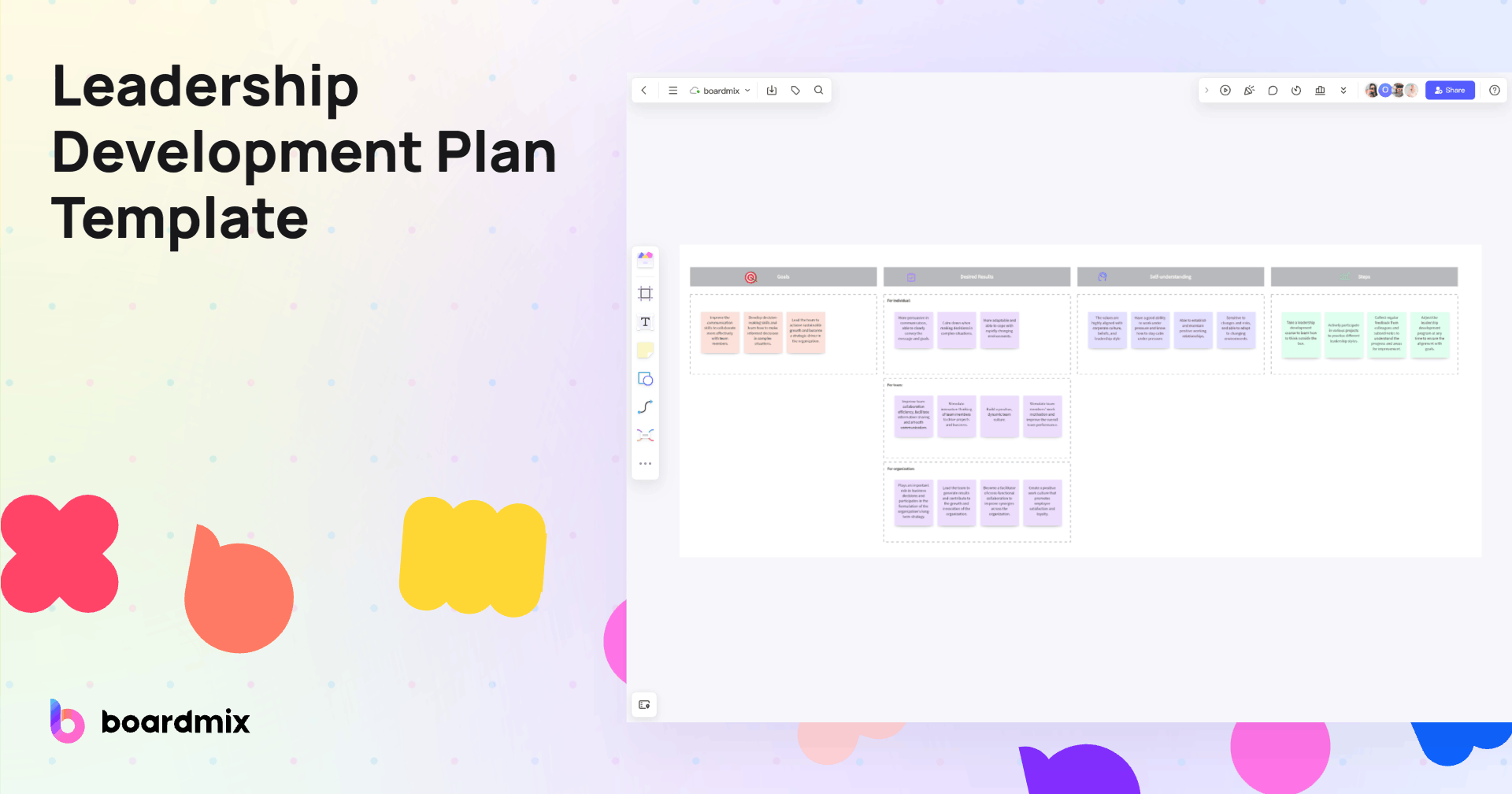
Build Leadership Development Plan for Free
The leadership development plan template usually starts with an assessment phase, where individuals identify their current leadership competencies and areas they need to improve. This could involve self-assessment tools or feedback from colleagues and subordinates.
Next, it outlines clear and measurable objectives that the individual aims to achieve. These goals should align with both personal aspirations and organizational needs. They could range from improving communication skills to learning strategic decision-making techniques.
The template also includes a detailed action plan on how to achieve these objectives. This might involve attending leadership training workshops, reading relevant books, or seeking mentorship from seasoned leaders.
Lastly, the template will have a section dedicated to tracking progress and evaluating performance over time. This ensures that the individual is moving towards their goals and can make necessary adjustments along the way.
What are the 4 components of a leadership development plan template?
There are a few different ways of creating a leadership development plan, and four major components are always included. These are the goal, the actual steps of the plan, the resources, and the timeline.
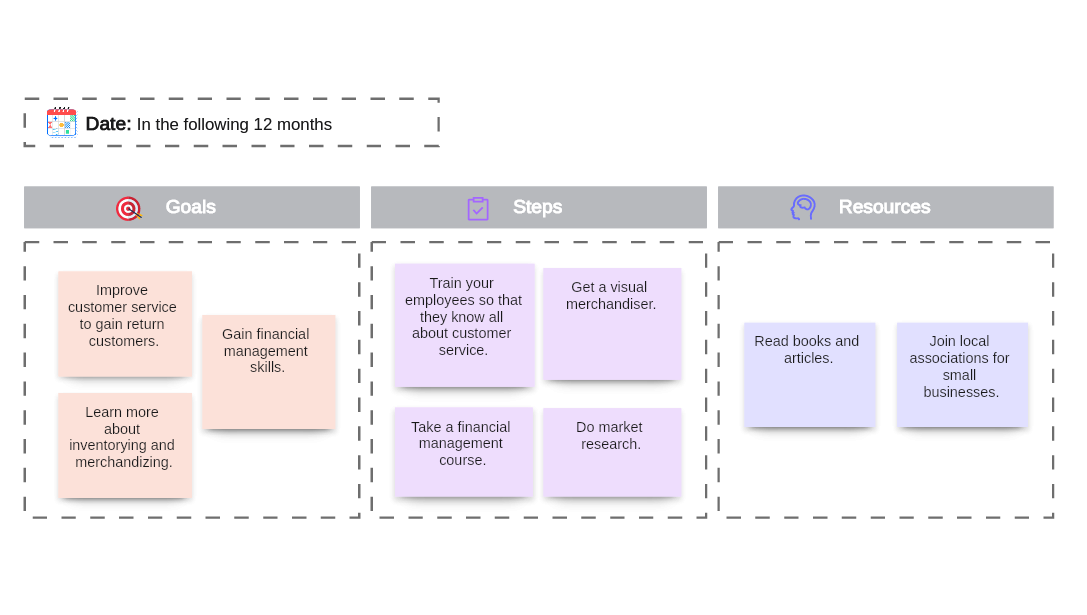
Goal
The objective relates to your desired outcomes from leadership development training. Specific aims may include enhancing self-discipline, honing listening skills, demonstrating personal responsibility, and improving time management. This section can also define effective leadership traits or list the skills inherent in a capable leader's repertoire.
Steps
With a clear goal in mind, the next stage is to draw up the steps you need to take to achieve the goal. Breaking down large milestones into smaller steps makes the goal more attainable.
Resources
While identifying your steps, you will also begin to know what kind of resources you would need to carry out the leadership development plan. These resources could include budget, time, training or coaching, or technology.
Timeline
A successful leadership development plan requires a well-structured timeline. It's essential to consider that employees will continue their regular tasks alongside the program. Given this time constraint, addressing high-priority goals initially is crucial, ensuring alignment with their regular work schedule. Achieving this balance is possible by creating a coherent timeline for the entire program. This strategic approach guarantees that leadership development is seamlessly integrated into work responsibilities, fostering efficient progress.
Why use a leadership development plan?
For any organization, maintaining an ongoing leadership development program offers numerous advantages. It not only enhances the skills of individual members, fostering competent leaders but also guarantees the continuous expansion and progress of the entire company.
Better work performance
The organization can expect better overall work performance by instilling leadership skills across the workforce. Departments led by competent managers would produce higher-quality output or generate more revenue.
Innovative solutions
A skilled leader can think quickly and come up with creative and effective solutions to any challenge, which is especially important in today's fast-paced business environment.
More employee engagement
Employees who work under a capable leader are happier at their jobs, feel more appreciated, and are, therefore, more engaged in their work. The organization will also have a higher chance of attracting top talent and a much lower chance of employee turnover because everyone just wants to stay.
More effective business strategies
Creating an organization's business strategies depends largely on input from its leaders. Through a good leadership development program, you can ensure that your leaders are perfectly capable of making the right recommendations and crafting the best business strategies to propel your enterprise to growth and success.
Of course, all these benefits can be more easily achieved using a well-crafted leadership development plan template. Some organizations create their leadership development plan, but the process can be tedious, and if you have never made one before, it can be quite daunting. Fortunately, Boardmix has a great ready-made development plan template that you can use.
Leadership Development Plan Templates
The Leadership Development Templates provide a strategic framework to enhance and improve critical leadership qualities. From improving communication skills to making better decisions, from resolving conflicts effectively to strategizing for organizational success, these templates are designed to guide emerging and established leaders on their growth journey.
1. Leadership Development Plan for Communication Skills
Objective: Improve communication skills to effectively convey ideas and instructions.
Action Steps:
- Attend a professional communication workshop or training.
- Practice active listening in every interaction.
- Regularly solicit feedback on communication clarity.
Timeline: 6 months
Resources: Communication workshops, feedback from team members, books on effective communication
Success Measure: Ability to communicate complex ideas, receive positive feedback on improved communication, and reduce misunderstandings or confusion in the team.
2. Leadership Development Plan for Decision-Making
Objective: Enhance decision-making skills to make better judgments.
Action Steps:
- Read books on decision-making techniques.
- Practice making decisions in simulated business scenarios.
- Seek a mentor to guide you on critical business decisions.
Timeline: 8 months
Resources: Books on decision-making, business simulations, mentor
Success Measure: Increased confidence in making tough decisions, positive outcomes from decisions made, approval from mentor and peers.
3. Leadership Development Plan for Strategic Thinking
Objective: Improve strategic thinking for better organizational planning.
Action Steps:
- Take up a course on strategic management.
- Regularly participate in strategic discussions with superiors or peers.
- Lead a strategic initiative in the organization.
Timeline: 1 year
Resources: Course on strategic management, strategic discussions, and leading a strategic initiative
Success Measure: Display of advanced strategic thinking in discussions and planning, successful execution of a strategic initiative, and recognition from superiors and peers.
Whether you're a rising star seeking to enhance your leadership capabilities or an established leader aiming to hone your skills, these leadership development templates serve as your roadmap to leadership excellence. With these in hand, you can lead with confidence, inspire with authenticity, and make an impact that lasts. Remember - leadership is not about being in charge, it's about taking care of those in your charge. These templates are here to help you do just that.
How to use the BoardMix's leadership development plan template?
Using the Boardmix leadership development plan template is easy and does not require any special skills at all. You can open the template where, as you will see, everything has been structured and divided into clear sections. All you have to do is write the details in the corresponding sections. Thus, you can focus more on the actual content of your plan than on the setup and layout. You can easily customize the template to fit your unique needs if you need to add more sections.

The Boardmix template will have various sections such as self-assessment, goals, action plan, etc. Click on each section to add your information. You can customize the template according to your needs by adding or removing sections.
Step 1: Log in to Your Boardmix Account
To begin, you'll need to access your Boardmix account. Go to the Boardmix website and enter your login credentials. If you don't have an account yet, you can sign up for a new one for free.

Step 2: Search and Choose Leadership Development Plan Template
Once you're logged in, head over to the Template library. You can find this in the main dashboard. Search for the Leadership Development Plan Template and click to use it for free.

Step 3: Customize and Edit Your Leadership Development Plan
Now that you've chosen the template, it's time to customize it according to your needs. You can use shapes, lines, drawing pens, icons, and other tools to decorate your template. The Leadership Development Plan Template comes with several sections that you can fill out.
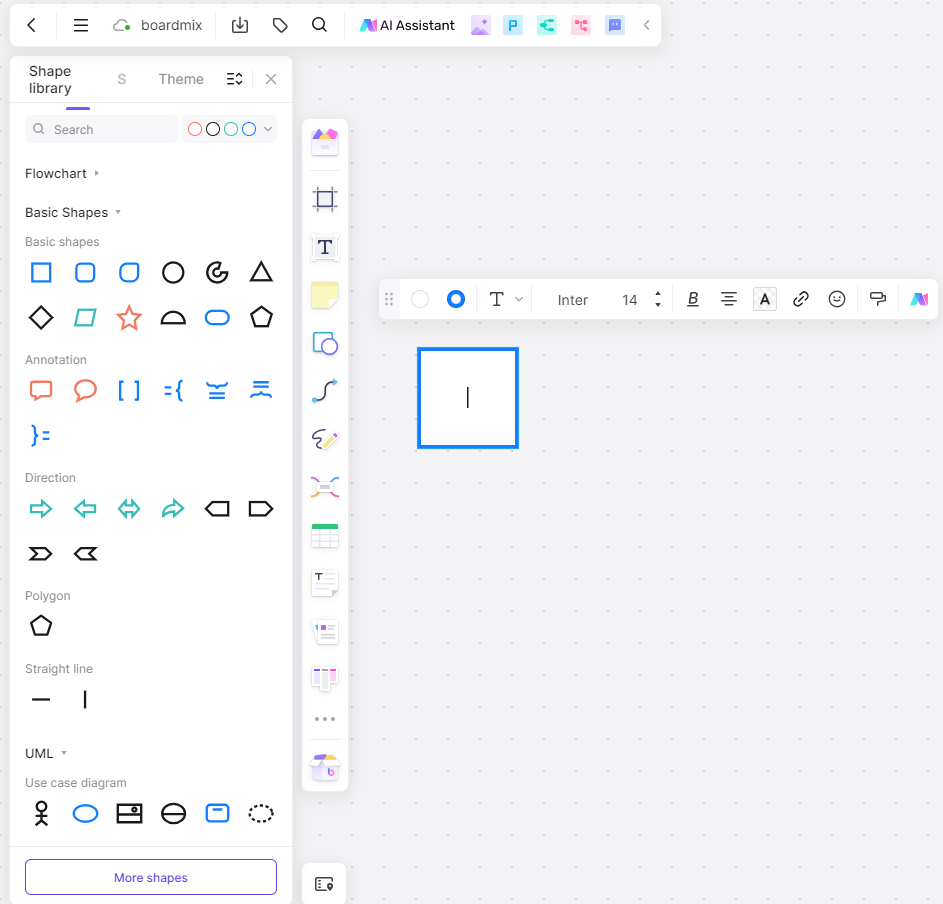
Step 4: Save Your Work, Share and Collaborate
When customizing your Leadership Development Plan, Boardmix autosaves your progress, but it's good practice to manually save before exiting.
Next, share your Leadership Development Plan to collaborate with your team. Click on the "Share" button on the top right corner of the screen, copy the sharing link, and send it to anyone whom you want to collaborate with. People can join this file to edit and collaborate on this file in real-time by clicking this sharing link. We encourage your team to leave comments, suggest edits, or ask questions online so you can adjust it in time.
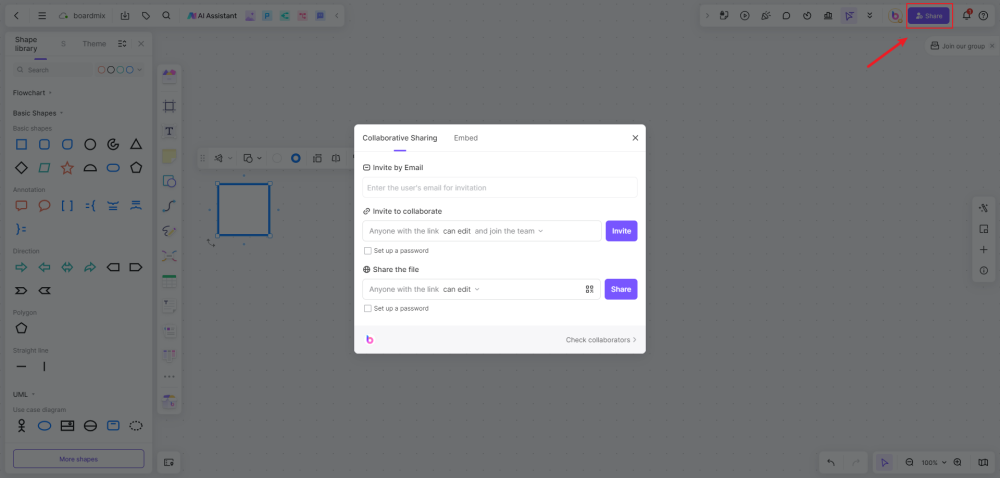
How do you write a leadership development plan?
Writing a leadership development plan involves several steps. Here's a general guideline:
-
Self-Assessment: The first step in writing a leadership development plan is to conduct a self-assessment. This involves identifying your strengths, weaknesses, opportunities, and threats (SWOT). You can use tools like 360-degree feedback or personality tests to get an objective view of your current skills and areas for improvement.
-
Define Your Goals: Once you've conducted the self-assessment, the next step is to define your leadership goals. These should be specific, measurable, achievable, relevant, and time-bound (SMART). For instance, you might aim to improve your public speaking skills or learn how to manage conflict effectively within the next six months.
-
Create an Action Plan: After defining your goals, you need to create an action plan on how to achieve them. This could involve attending training workshops, reading books on leadership, seeking mentorship, or getting more hands-on experience by taking on new responsibilities at work.
-
Implementation: Once you have your action plan in place, it's time to implement it. This is where the real work begins as you start working towards your goals. Remember that consistency is key here.
-
Review and Adjust: Finally, regularly review your progress towards your goals and make necessary adjustments along the way. This could mean revising your goals or action plan based on the progress you've made or challenges you've encountered.
What are the 5 phases of leadership development?
The 5 phases of leadership development typically include:
-
Self-Awareness Phase: This is the first phase where an individual recognizes their strengths and weaknesses as a leader. It involves self-assessment tools, feedback from peers, and introspection to understand personal leadership style and areas that need improvement.
-
Learning Phase: In this phase, the individual begins to acquire new knowledge and skills necessary for effective leadership. This might involve attending workshops, reading books, or seeking mentorship. The focus here is on learning and understanding key leadership principles and how they can be applied in practice.
-
Practice Phase: Here, the individual starts applying the learned skills in real-life situations. This could mean taking on more responsibilities at work, leading a team project, or practicing communication and decision-making skills. The goal is to translate theory into practice.
-
Mastery Phase: After consistent practice, the individual begins to master the skills they've been working on. They become more confident in their leadership abilities and start to see improvements in their performance. However, mastery doesn't mean there's no room for growth; it's an ongoing process of learning and refining skills.
-
Mentorship Phase: In this final phase, the individual has not only developed their leadership skills but also feels confident enough to guide others. They may mentor other emerging leaders in their organization or community, sharing their knowledge and experiences.
What are the 4 C's of leadership development?
The 4 C's of leadership development are often referred to as:
-
Competence: This refers to the skills and knowledge that a leader possesses. It's not only about having technical expertise but also understanding how to lead a team, make strategic decisions, and handle crises. Leaders should continually seek to improve their competencies through learning and development opportunities.
-
Confidence: Confidence is crucial in leadership roles. Leaders need to have faith in their abilities and decisions, as this confidence often inspires the same in their team members. Confidence can be built over time through experiences, successes, and even failures.
-
Character: This refers to a leader's integrity and ethical standards. A leader with a strong character is trustworthy, reliable, and accountable for their actions. They uphold the values of the organization and set a positive example for their team.
-
Connection: Effective leaders understand the importance of building strong relationships with their team members, peers, superiors, and other stakeholders. They communicate effectively, show empathy, and foster a sense of community within the team.


